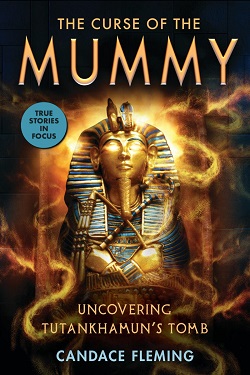 Everyone has heard of King Tutankhamun–the boy king whose reign as a pharaoh in Egypt’s New Kingdom was cut tragically short when he died as a teenager. You’ve probably seen pictures of the wondrous artifacts buried with him in his tomb so that they could travel with him into the afterlife.
Everyone has heard of King Tutankhamun–the boy king whose reign as a pharaoh in Egypt’s New Kingdom was cut tragically short when he died as a teenager. You’ve probably seen pictures of the wondrous artifacts buried with him in his tomb so that they could travel with him into the afterlife.
But there’s more to the story than that. Centuries later, many believed the tomb was lost forever. After so many years of searching, some believed excavators would never uncover a tomb in the famed Valley of the Kings that had not fallen prey to looters.
They were wrong.
This is the story of the unlikely pair of men who, together, uncovered one of the most famous archaeological finds in history. This is also the story of how they may–or may not–have also been the first victims of one of the most enduring curses in history in The Curse of the Mummy: Uncovering Tutankhamun’s Tomb (2021) by Candace Fleming.
Fleming turns her considerable talents as an author and researcher to separate fact from fiction surrounding the discovery and excavation of King Tut’s tomb in 1922. The rumors of the curse that affected Howard Carter, Lord Carnarvon, and the members of the excavation party. Chapters are broken up with sections titled “It Was Said” detailing the lurid details of the curse and the mysterious circumstances that befell many of the people present when Tutankhamun’s tomb was discovered on November 4, 1922.
In addition to detailing the excavation and its historical significance, Fleming also acknowledges the problems with British colonizers coming to Egypt to excavate the country’s most precious artifacts–many of which still need to be repatriated even now.
The Curse of the Mummy is an entertaining introduction to both archaeology and ancient Egypt which also has a lot of new information to offer more seasoned readers. As to whether or not there is a curse on King Tut’s tomb, Fleming offers a very measured final chapter that largely debunks and tries to put to rest all theories about the curse as anything but a series of compelling coincidences. But some readers may still choose to believe.

